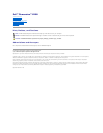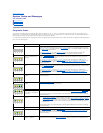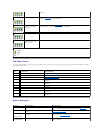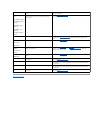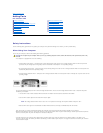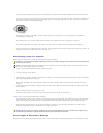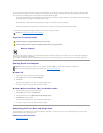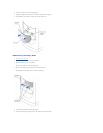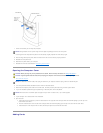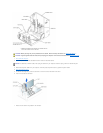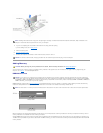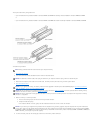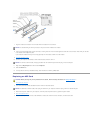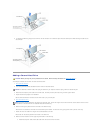
l To help avoid possible damage to the system board, wait 5 seconds after turning off the computer before disconnecting a device from the computer.
l To help prevent electric shock, plug the computer and device power cables into properly grounded electrical outlets. These cables are equipped with 3-
prong plugs to help ensure proper grounding. Do not use adapter plugs or remove the grounding prong from a cable. If you must use an extension
cable, use a 3-wire cable with properly grounded plugs.
l To help protect your computer from sudden, transient increases and decreases in electrical power, use a surge suppressor, line conditioner, or
uninterruptible power supply (UPS).
l Be sure nothing rests on your computer's cables and that the cables are not located where they can be stepped on or tripped over.
l Do not push any objects into the openings of your computer. Doing so can cause fire or electric shock by shorting out interior components.
l Keep your computer away from radiators and heat sources. Also, do not block cooling vents. Avoid placing loose papers underneath your computer; do
not place your computer in a closed-in wall unit or on a bed, sofa, or rug.
When Working Inside Your Computer
Before you open the computer cover, perform the following steps in the sequence indicated.
CAUTION: Only a certified service technician should perform repairs on your computer. Damage due to servicing that is not authorized by Dell is
not covered by your warranty.
NOTICE: To help avoid possible damage to the system board, wait 5 seconds after turning off the computer before removing a component from the
system board or disconnecting a device from the computer.
1. Perform an orderly computer shutdown using the operating system menu.
2. Turn off your computer and any devices.
3. Ground yourself by touching an unpainted metal surface on the chassis, such as the metal around the card-slot openings at the back of the computer,
before touching anything inside your computer.
While you work, periodically touch an unpainted metal surface on the computer chassis to dissipate any static electricity that might harm internal
components.
4. Disconnect your computer and devices, including the monitor, from their electrical outlets. Also, disconnect any telephone or telecommunication lines
from the computer.
Doing so reduces the potential for personal injury or shock.
5. Disconnect the power cable to your computer, and then press the power button to ground the system board.
In addition, take note of these safety guidelines when appropriate:
l When you disconnect a cable, pull on its connector or on its strain-relief loop, not on the cable itself. Some cables have a connector with locking tabs; if
you are disconnecting this type of cable, press in on the locking tabs before disconnecting the cable. As you pull connectors apart, keep them evenly
aligned to avoid bending any connector pins. Also, before you connect a cable, ensure that both connectors are correctly oriented and aligned.
l Handle components and cards with care. Do not touch the components or contacts on a card. Hold a card by its edges or by its metal mounting
bracket. Hold a component such as a microprocessor chip by its edges, not by its pins.
CAUTION: There is a danger of a new battery exploding if it is incorrectly installed. Replace the battery only with the same or equivalent type
recommended by the manufacturer. Discard used batteries according to the manufacturer's instructions.
Protecting Against Electrostatic Discharge
Static electricity can harm delicate components inside your computer. To prevent static damage, discharge static electricity from your body before you touch



